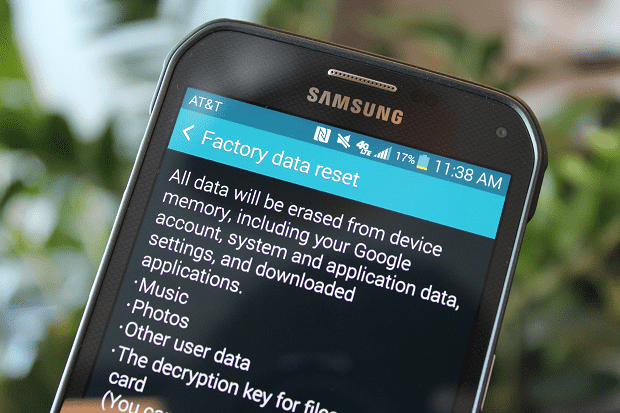If you’re satisfied with pressing the “factory reset” in order to make everything go poof, and think that it is enough to save your data from unauthorized access; then you’re sadly mistaken. Although this might be enough for the Average Joe, but if you are an important person and an owner of some sensitive data; or are simply paranoid about identity theft and other technology related crimes then you need to take a couple of more precautions.
It is common knowledge and backed by many researches that data on your smartphone can easily be recovered with the right tools even after the so-called factory reset has been performed. The reason behind this is because when you delete some files individually or erase them using the factory reset, the data is not overwritten or “washed away” like many think — it is simply thrown away into another file. This essentially means that the data is being stored into the free space left on your memory device.
Data that can be recovered even after presumably “erasing it” can pose real privacy problems after you sell or donate your Android phone.
So what does this mean? Is there really no way you can protect yourself?
No need to panic as it just so happens to be your lucky day! Today here at Wonderful Engineering we will tell you exactly how you can avoid a major data/identity theft catastrophe in 3 simple steps.
Step 1: Encrypt, Encrypt, Encrypt!
We cannot iterate it enough; data encryption is the BEST way to prevent your data from being recovered after you delete it. By encrypting your device, you are in essence mashing up and scrambling all of your data, and locking it away with a key that only you know. Once your phone data is encrypted its data cannot be decrypted in any way other than entering a passcode.
Today, most of the android devices running on 6.0 Marshmallow are required by Google to have support encryption for maximum security.
In case your device is running on Android 5.0 Lollipop or lower, you’ll first need to check whether it supports encryption or not. If it does, you must turn on encryption in your device by going to (Settings > Security > Encrypt phone). This will scramble all of your data before you perform the next factory reset making it virtually unrecoverable.

Step 2: Overwrite it with throwaway data
This might sound like overkilling it, but hey nothing is worth more than your security and peace of mind. So in order to go even a step further after resetting the factory settings and encrypting your data, you can overwrite it using junk information. This will make sure that you have completely destroyed your sensitive data and makes it even more garbled and hard to decipher by overwriting it with new junk data.
You can perform this action as follows. Set up your device after a factory reset, but this time, do not sign into any Google or online accounts. Once your device is set up, you can start storing the garbage data until your memory is completely exhausted. The easiest way to do this is by recording a video until it takes up all your data. Put your camera on the highest resolution setting to complete this process quickly.
After this perform another factory reset and voila; your android device is re-birthed, with no memory of what was stored on it before.
Step 3: Repeat
If you are either the head of some secret brotherhood or simply the personification of the word paranoid, you can follow Step 1 and Step 2 over and over again until you are completely satisfied that no one will be able to catch your dirty little secrets. This way even if someone was able to recover the data, they would not get anything useful. But in our opinion, a single encryption-cum- reset plus the garbage data overwrite will be enough to protect your privacy.
Have you ever been concerned about or a victim of data theft?
Do you have any more ways to further beef up the security?
Comment below!


